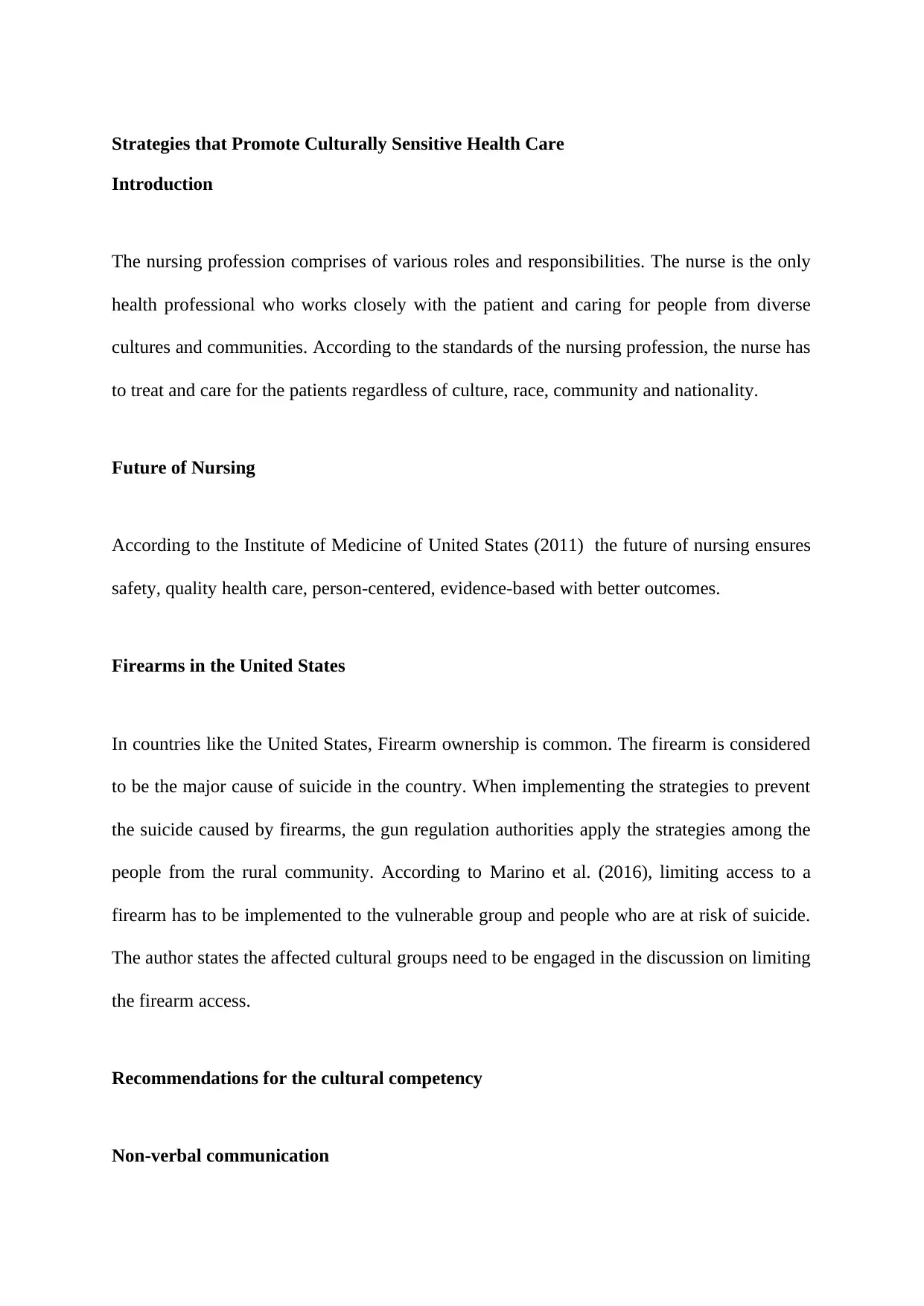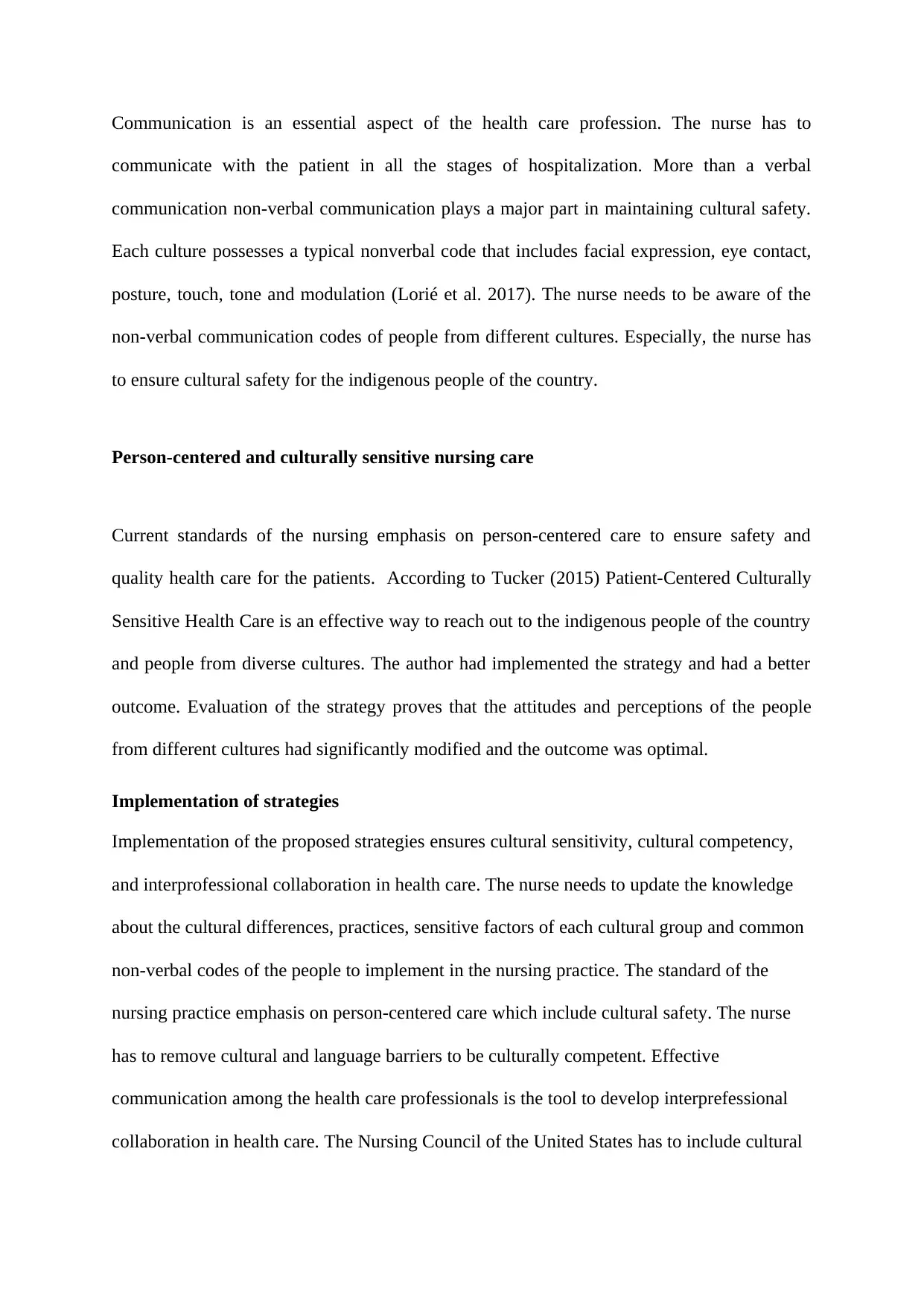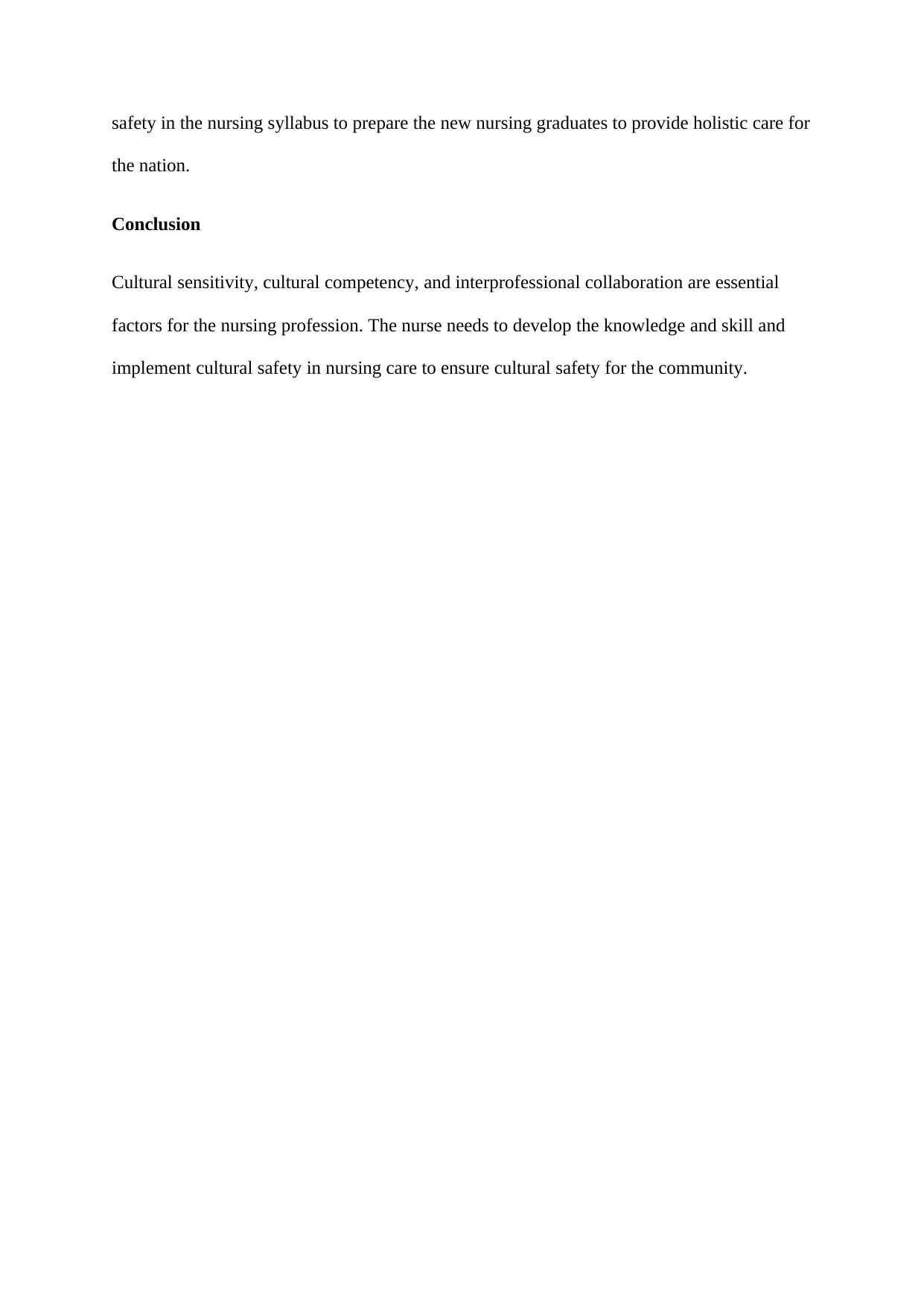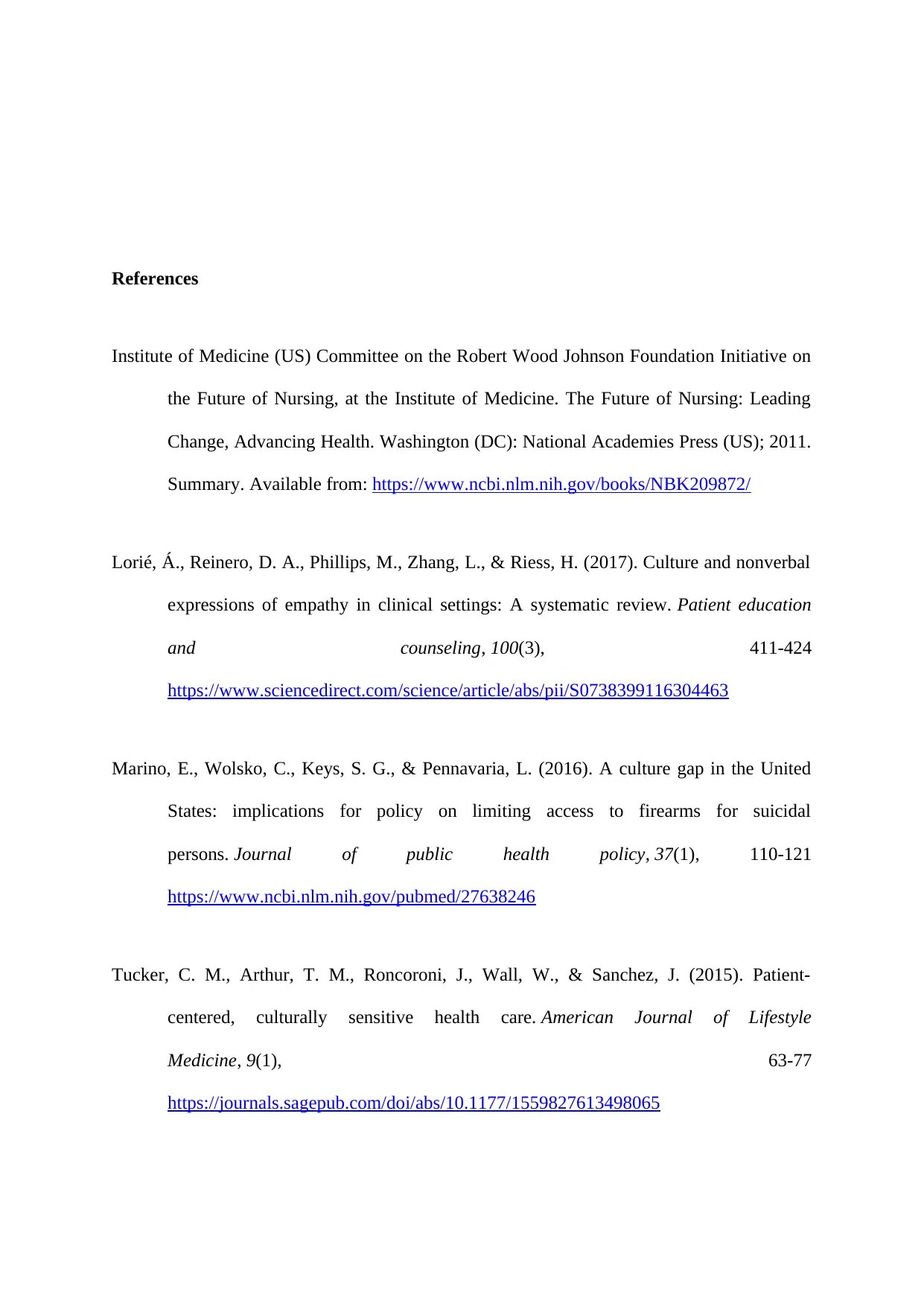Effective Strategies for Promoting Culturally Sensitive Healthcare
VerifiedAdded on 2022/09/11
|4
|814
|22
Report
AI Summary
This report examines strategies to promote culturally sensitive healthcare, emphasizing the critical role of nurses in providing care to diverse populations. It highlights the importance of cultural competency, person-centered care, and effective communication, including non-verbal cues, to ensure patient safety and quality outcomes. The report references the Institute of Medicine's recommendations for the future of nursing, and discusses the need for healthcare professionals to be aware of cultural differences and sensitive factors in nursing practice. It also addresses the role of interprofessional collaboration and recommends integrating cultural safety into nursing curricula. The report underscores that cultural sensitivity, competency, and interprofessional collaboration are essential for improving the nursing profession, and ultimately enhancing the health of the community.
1 out of 4







![Nursing Profession Reflection Report - [University/College Name]](/_next/image/?url=https%3A%2F%2Fdesklib.com%2Fmedia%2Fimages%2Fxu%2F72b5ecdeb9cd4b09bfa05c90ebf133a4.jpg&w=256&q=75)



![[object Object]](/_next/static/media/star-bottom.7253800d.svg)